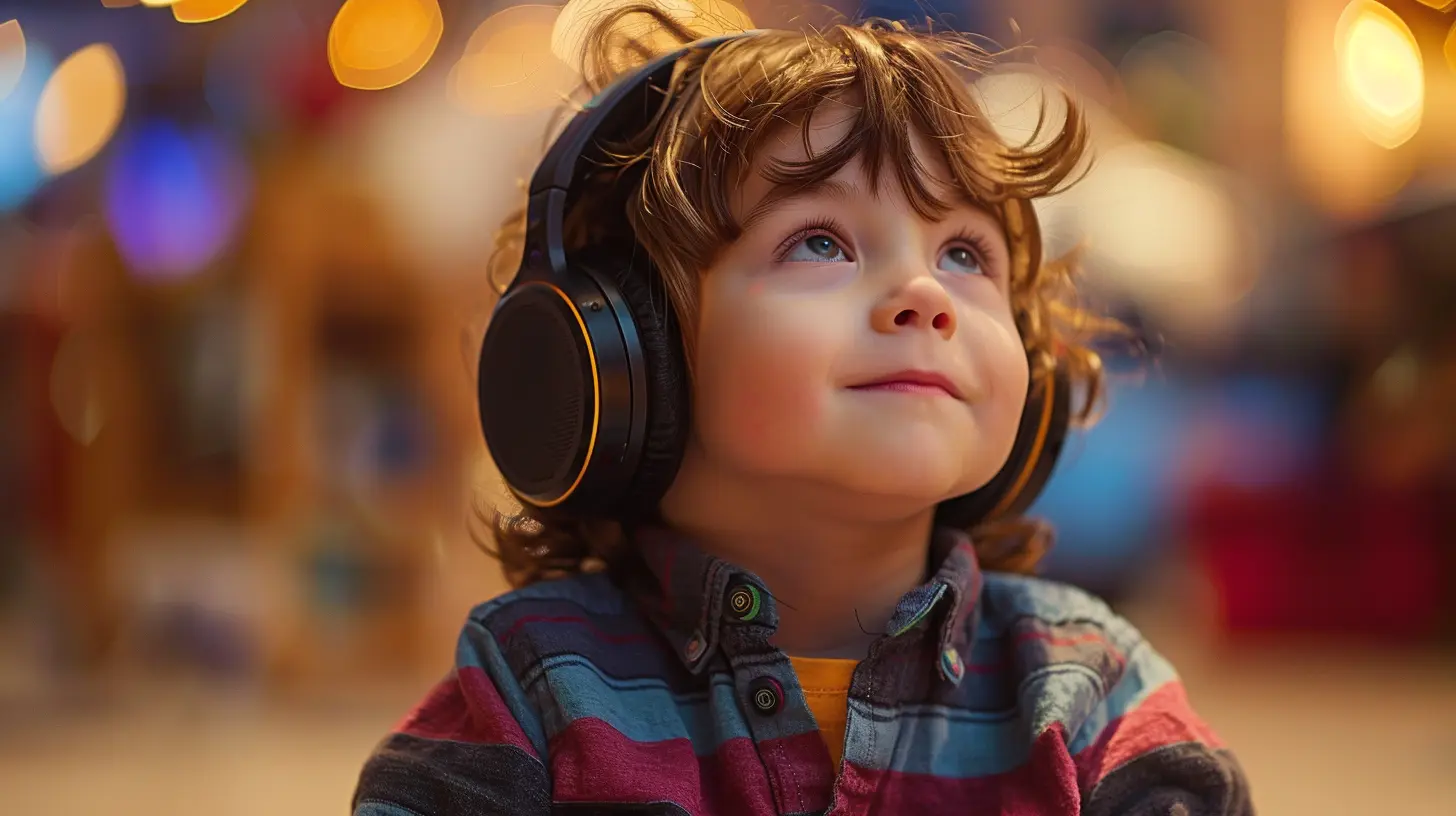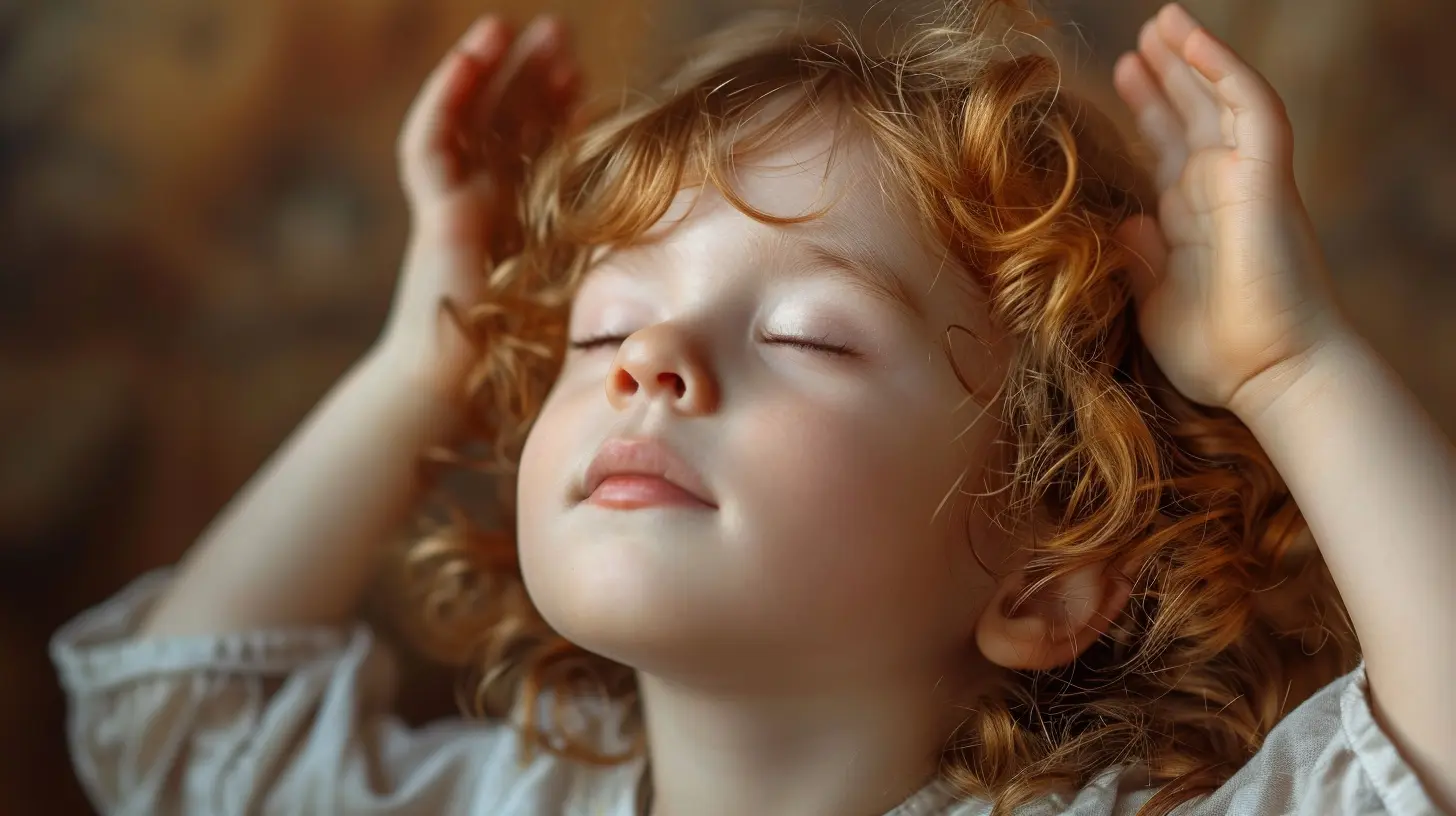The Power of Music Therapy: How It Can Help Your Child
15 August 2025
Music has a way of touching our emotions, bringing back memories, and even improving our mood. But did you know that it can also be a powerful tool for helping children with emotional, cognitive, and physical challenges? That’s where music therapy comes in.
Music therapy is not just about listening to songs—it’s a structured and evidence-based approach to improving mental and physical well-being. Whether your child struggles with anxiety, developmental challenges, or even social skills, music therapy can be a game-changer. Let's dive into how it works and why it might be just what your child needs. 
What Is Music Therapy?
Music therapy is a clinical and evidence-based practice where trained professionals use music to address emotional, cognitive, and physical needs. It involves techniques like singing, playing instruments, listening to music, and even composing songs to help individuals express themselves and develop essential skills.This therapy is widely used with children who have autism, ADHD, speech delays, or emotional difficulties. It’s a non-invasive, engaging way to foster development without feeling like traditional therapy. 
How Music Therapy Benefits Children
Children process the world differently than adults, and music speaks their language. Here’s how music therapy can positively impact your child:1. Enhances Emotional Expression & Regulation
Some kids struggle to express their feelings, and words don’t always come easily. Music provides a safe outlet for expressing emotions. Whether through singing, drumming, or even just listening to melodies, children can process their feelings in a healthy way.For kids dealing with anxiety or trauma, music therapy can offer a sense of control and comfort. Soothing sounds and structured musical activities help regulate emotions and reduce stress.
2. Improves Communication & Social Skills
Does your child have trouble engaging with others? Music therapy encourages interaction. Group music sessions, singing exercises, and call-and-response activities help kids develop communication and social skills naturally.For children with autism or speech delays, music therapy can be especially beneficial. It stimulates brain areas linked to speech and language, making it easier for kids to understand and use words over time.
3. Boosts Cognitive Development & Learning
Music activates multiple parts of the brain, enhancing memory, focus, and problem-solving skills. Studies show that kids who engage in musical activities perform better academically, especially in subjects like math and reading.Ever noticed how songs help you remember information? That’s because rhythm and melody improve information retention. For kids with learning disabilities, music therapy can be an effective way to strengthen cognitive skills.
4. Encourages Physical Development & Coordination
Music therapy isn’t just about the mind—it can help with physical development too. Activities like drumming, clapping, or dancing improve fine and gross motor skills.For children with movement disorders or motor delays, rhythmic exercises help build coordination, balance, and muscle strength in a fun and engaging way.
5. Reduces Anxiety & Promotes Relaxation
Music has a natural ability to calm the nervous system. Slow, rhythmic sounds lower heart rate, reduce cortisol (the stress hormone), and create a sense of relaxation.If your child struggles with anxiety, sleep problems, or hyperactivity, music therapy can offer a valuable tool for relaxation and stress management.
6. Encourages Creativity & Self-Confidence
Music therapy allows children to explore their creativity without judgment. Whether they're writing a song, playing an instrument, or simply experimenting with sounds, it boosts confidence and self-expression.For shy or introverted children, music can be a gateway to stepping out of their comfort zone and finding their voice. 
Who Can Benefit from Music Therapy?
Music therapy is beneficial for all children, but it’s particularly helpful for those facing:- Autism Spectrum Disorder (ASD)
- Attention Deficit Hyperactivity Disorder (ADHD)
- Anxiety and depression
- Speech or communication delays
- Learning disabilities
- Sensory processing disorders
- Emotional trauma or stress
Even children without specific challenges can experience increased focus, creativity, and emotional well-being through music therapy. 
What Happens in a Music Therapy Session?
Wondering what a typical music therapy session looks like? It's not just about listening to music—it's interactive, structured, and tailored to the child's needs. A certified music therapist will assess the child's strengths and challenges before designing activities that can include:- Singing – Helps improve speech, pronunciation, and confidence.
- Playing Instruments – Enhances hand-eye coordination and motor skills.
- Listening to Music – Regulates mood and encourages relaxation.
- Movement & Dance – Improves physical coordination and emotional expression.
- Songwriting & Composition – Encourages creativity and emotional release.
Each session is personalized, allowing children to engage in a way that feels natural and enjoyable.
How Can Parents Incorporate Music Therapy at Home?
Even if you don’t have a certified music therapist at home, you can still harness the power of music therapy in your daily routine. Here are some simple ways to integrate music into your child’s life:1. Create a Music Routine – Play calming music during bedtime or energetic tunes in the morning to set the mood.
2. Sing Together – Singing nursery rhymes or favorite songs can strengthen communication and bonding.
3. Encourage Instrument Play – Provide simple instruments like drums, maracas, or a small keyboard for exploration.
4. Use Music for Transitions – Singing transition songs (e.g., “Clean-Up Song”) makes daily routines smoother.
5. Dance & Move – Turn on some music and have a dance party to boost mood and coordination.
The key is to make music a fun, natural part of your child's environment.
Finding a Qualified Music Therapist
If you think music therapy could benefit your child, consider working with a certified professional. Look for:- Board-certified music therapists (MT-BC)
- Therapists with experience working with children
- Recommendations from pediatricians or educators
Many schools, hospitals, and therapy centers offer music therapy programs, so don’t hesitate to ask around.
Final Thoughts
Music therapy is more than just a fun activity—it’s a powerful tool that can help children express emotions, build confidence, and develop essential life skills. Whether your child faces challenges or you simply want to enhance their well-being, incorporating music into their routine can make a big difference.So, why not give it a try? Whether it’s singing in the car, drumming on the table, or dancing in the living room, music has the power to heal, connect, and inspire.
all images in this post were generated using AI tools
Category:
Special NeedsAuthor:

Noah Sawyer
Discussion
rate this article
1 comments
Brooks McSweeney
Music therapy offers a unique, emotional outlet for children, fostering communication and self-expression. It can enhance social skills and reduce anxiety, allowing children to navigate their feelings in a supportive environment. As parents, recognizing and embracing this therapeutic tool can profoundly benefit our child’s development.
August 28, 2025 at 2:41 PM

Noah Sawyer
Thank you for your insightful comment! I completely agree that music therapy provides invaluable support for children's emotional and social development. It truly empowers them to express themselves and connect with others in a meaningful way.


